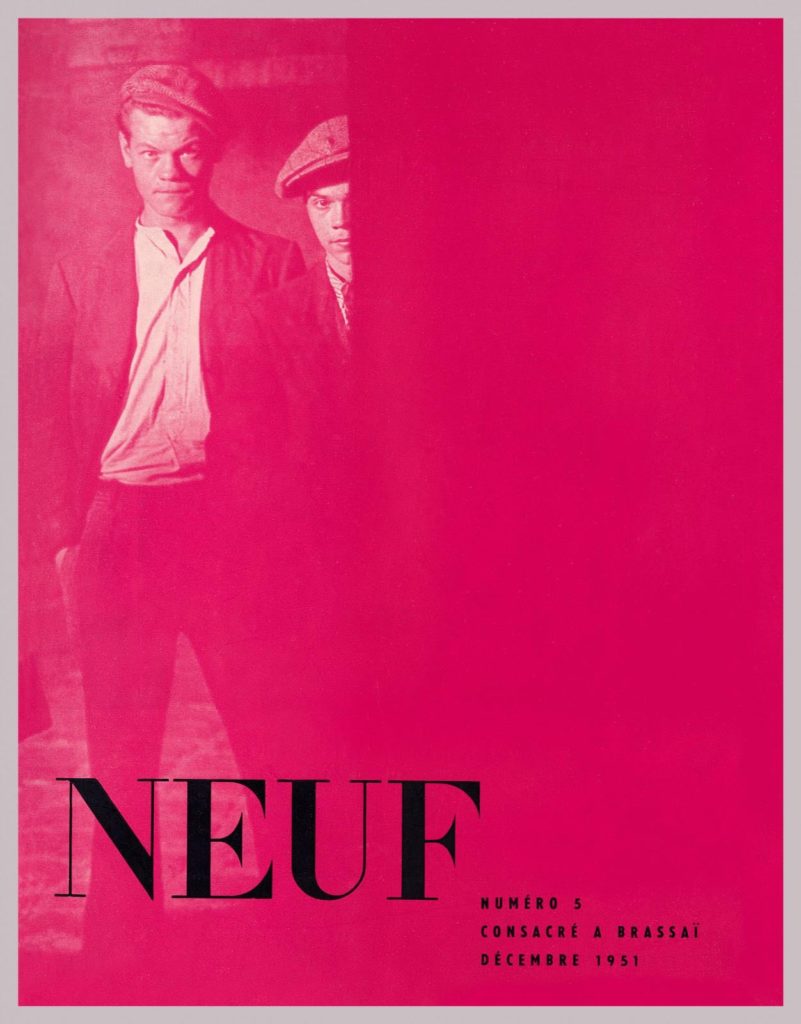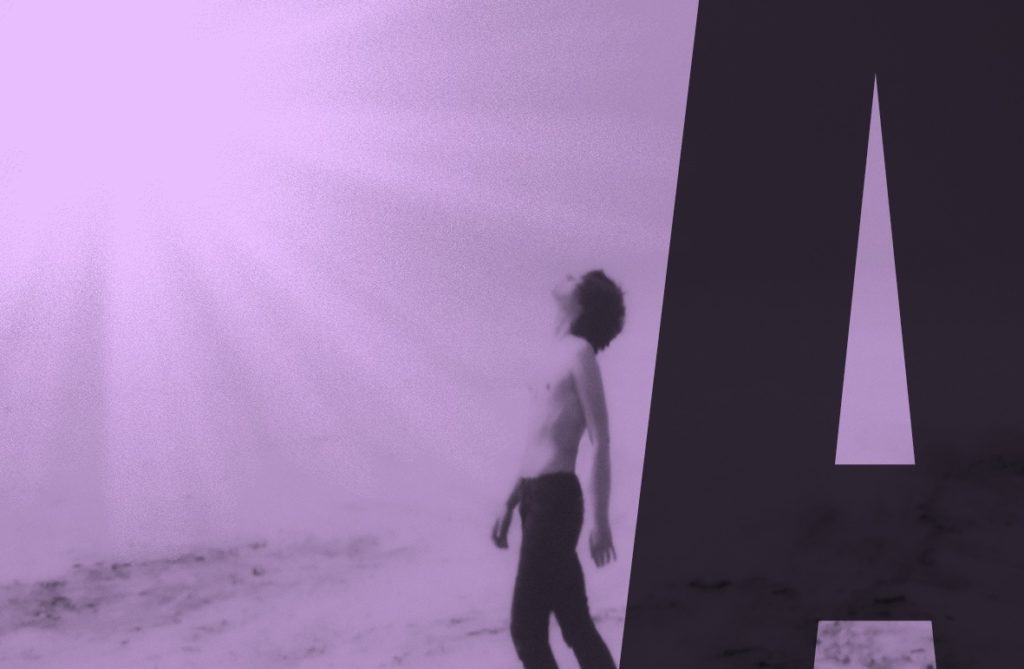
Les Rencontres de la Photographie are opened until September 26, 2021. The arrival of their new director, Christoph Wiesner, is marked by a new graphic identity by ABM Studio, which brings the A of Arles into dialogue with the photo from the Désidération series by SMITH. Sam Stourdzé’s successor therefore presented an enticing program featuring Sabine Weiss, Charlotte Perriand, Raymond Cauchetier (the photographer of La Nouvelle Vague), Jazz Magazine, the Orient-Express, the magazine NEUF by Robert Delpire, the portraits of Pieter Hugo, the Korea of Stéphan Gladieu, the USA of Jean-Luc Bertini… So this summer, get back to your good habits and go and enjoy the pleasures offered by the lively city of Arles.
Let’s sleep in Arles
In addition to the classics (the Nord-Pinus, the Hôtel Particulier, Le Cloître and L’Arlatan), the three hotels that everybody talks about are Les Cabanettes, Hotel Voltaire and Maison Volver. Not that these places are new in themselves, it’s just that they have been taken over by teams as charming and dynamic as they are respectful of the spirit of the places, and that they find a second youth while cultivating their undeniable vintage charm.
Les Cabanettes
Gaëlle and Aaron bought Les Cabanettes in 2019, a modernist motel designed in the mid-1960s by architect Armand Pellier for Marc and Louise Berc. Fifteen minutes from the center of Arles, on a departmental road in the middle of the Camargue, 29 rooms in a breathtaking building of concrete, beige stone and glass, with a half-moon awning, housing ten bay windows from floor to floor. ceiling, framed by varnished wood uprights. Vintage in its own juice for the modest sum of € 95 per double and € 150 per quadruple, swimming pool included. Just perfect.







L’Hotel Voltaire
Still Sixties with the Hotel Voltaire, whose restaurant is always full (more on this below). But the rooms are also worth the visit. Designed by the architect Eloïse Bosredon, the 9 rooms are simple but stylish, and at € 69 per double and € 89 per family room for 4, hard to beat when it comes to value for money.





Maison Volver
Cozy, the Maison Volver by Carole Picard and Florence Pons, whose restaurant is also always full (we will also talk about it below). As for the twelve bedrooms, the least we can say is that the greatest care has been taken in their decoration, down to the smallest detail: 1950s terrazzo on the floor, Murano lamps, linen sheets, mix of vintage furniture and design classics… From € 115 for a double standard including breakfast to € 219 for a suite for 4.

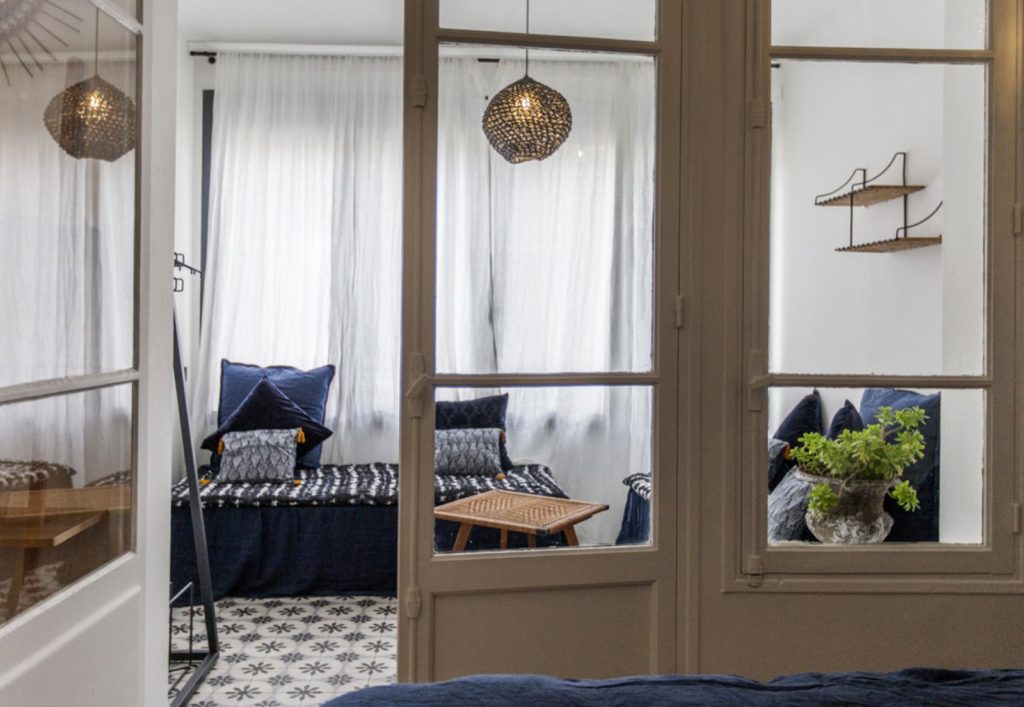


Le Grand Hotel Nord-Pinus
Well, if you have a little more than 480 € to spend per night, no hesitation, book the suite (2 bedrooms) on the top floor of the Grand-Hotel Nord-Pinus, a legendary address for bullfighters and aficionados passing through Arles. Expensive but chic.

L’Hotel Particulier
Also chic but even more expensive, the Hôtel Particulier offers rooms at 320 € and suites at 500 €. Less cult than the Nord-Pinus, but more luxurious, with swimming pool, spa and hammam available





Le Cloitre
Still chic, cheaper, but more stylish, Le Cloître and its 19 rooms, from € 119 for a classic double to € 184 for a junior suite (add € 16 per person for breakfasts), could be the ideal compromise. The LMA group, owned by the Maja Hoffmann’s Luma Foundation, had entrusted the decoration to India Mahdavi, and ten years later, the Cloitre has not aged a bit. On the other hand, given the success of the place, book early.



L’Arlatan
Still in the LMA fold, L’Arlatan has just had a makeover. And there, watch your eyes. The project was entrusted to American-Cuban artist Jorge Prado, who surrounded himself with a team of architects, designers, cabinetmakers and painters from Yucatan. South America and the Camargue collide in a colorful fireworks display of graphic fabrics, openwork metal, restored period ceilings, mosaic floors, and pinata lighting. 35 rooms from € 129 the small classic double to € 419 the suite.
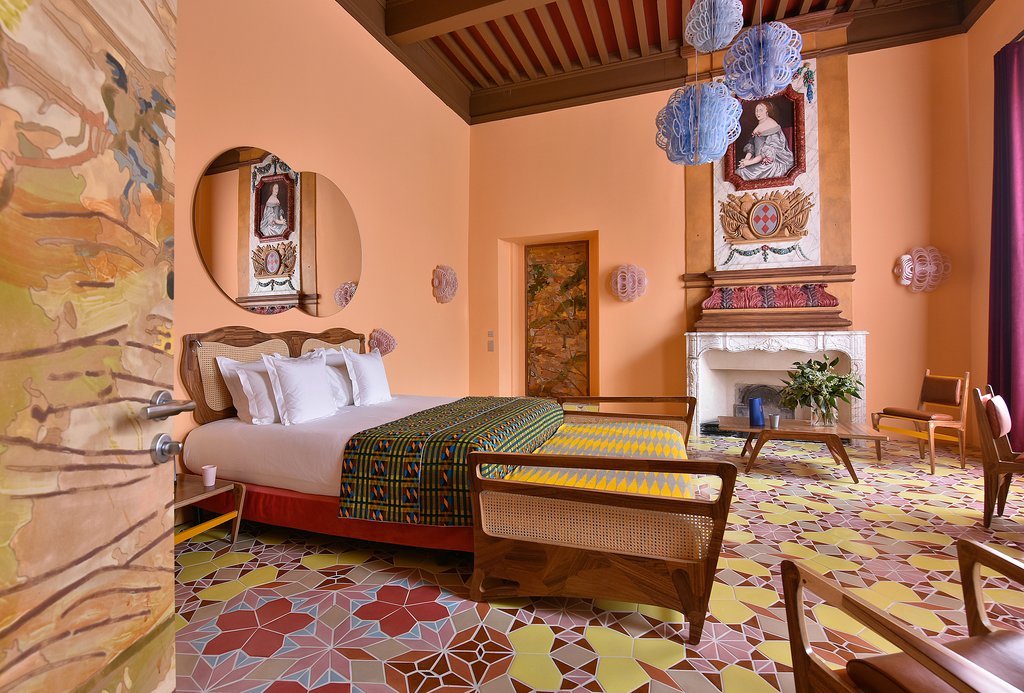

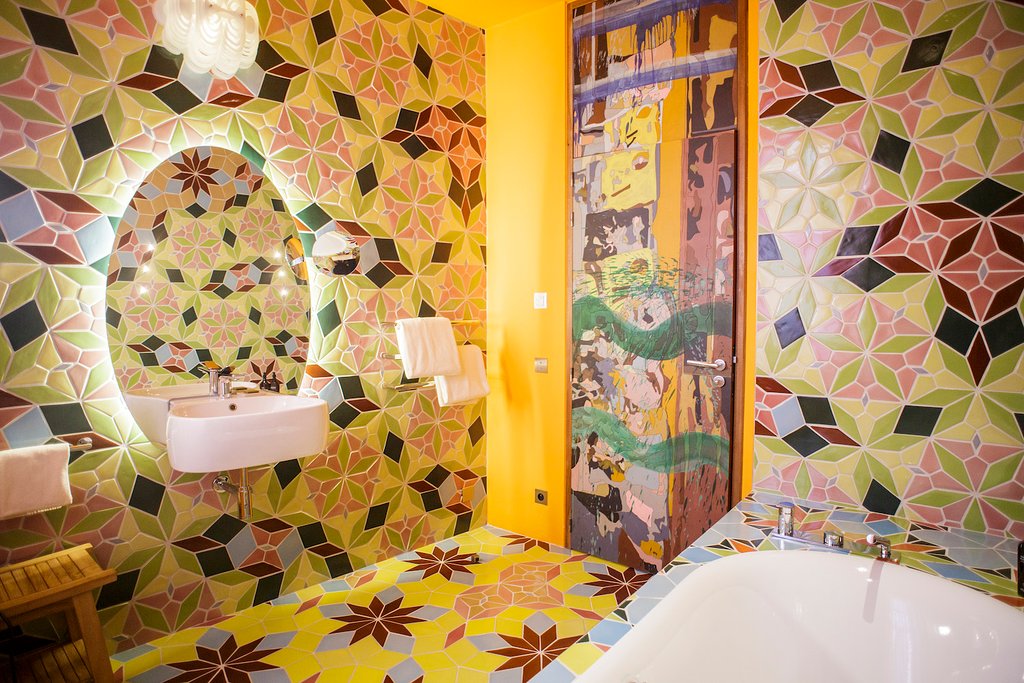


Friday’s evening dinner
So you can of course have dinner at Les Cabanettes (if you are staying there) or revise your classics at the always excellent Gibolin by Brigitte Cazalas and Luc Desrousseaux, a staple in Arles for over 10 years.

Saturday in Arles
«Orient-Express & Cie», «Rethink everything», and «Neuf from A to Z» at the Espace Van Gogh
Come on, let’s go for the photo marathon with the three exhibitions on view at the Espace Van Gogh. So, as soon as the doors open, embark (pun intended not very original but appropriate) aboard the Orient-Express, the jewel of the International Sleeping Car Company. Operated between 1883 and 1977 and connecting Paris to Constantinople/Istanbul, it is the first and most iconic of international luxury trains. The photographs presented in the Orient-Express & Cie exhibition come from the archives of the former Compagnie internationale des wagons-lits, and if most are anonymous, others are signed by famous workshops such as Paul Nadar, Albert Chevojon or Sébah & Joaillier.


A change of scenery for the second exhibition at Espace Van Gogh, entitled “Rethink everything – The power of art in times of isolation”. You will understand, the pandemic has passed through there with its procession of questions about our ways of thinking and living. Feminism, questioning of the consequences of globalized capitalism, the collapse of anthropocentric models… Photography as a witness and source of inspiration for current and future changes.



And to end your morning at the Espace Van Gogh, immerse yourself in the legendary NEUF magazine, created in 1950 by Robert Delpire.
At 24 years old, Robert Delpire is a medical student when he embarks on a unique editorial adventure that will last three years and nine issues. Texts by Guillaume Apollinaire, André Breton, Blaise Cendrars, Jean Cocteau, Henry Miller, and Jean-Paul Sartre rub shoulders with illustrations by Savignac, André François, Raoul Dufy, and photographs by Brassaï, Doisneau, Cartier-Bresson, Robert Frank, Izis… This illustrated magazine, initially reserved for an audience of doctors, will give birth to the Delpire Editions, a publishing company specialized in photography and art. The exhibition tells, through 26 chosen words and as many stories, the foundations of photography publishing and the unprecedented creative impetus that animated the post-war years.
Sabine Weiss at the Museon Arlaten
Then take the direction of the Museon Arlaten for the retrospective dedicated to Sabine Weiss, the last representative of the French humanist school, and creator of a work as rich as it is diverse, kept intact in the house-studio where she has lived since 1949.

At 96 years old, the one who claims to be a photographer-artisan and witness, rather than an artist, has nonetheless built a true photographic monument, in a free and independent manner. The original retrospective, presented in the recently restored Museon Arlaten chapel, combines reportage, illustration, fashion, advertising, artist portraits, as well as personal work …


Pieter Hugo au Palais de l’Archevêché
Pieter Hugo is a master of portraiture. The exhibition dedicated to him by the Rencontres is called “Being present” and brings together more than a hundred, produced since the early 2000s.

“My work is about the notion of being an outsider: I feel I inhabit this space myself and I embrace this awareness as a way to engage with the people I photograph. I almost always work by announcing myself at the outset; I look, and I am equally looked at. When making a portrait there is a brief moment in which cynicism disappears. There is beauty in being held in the gaze of another.”


Let’s have lunch in Arles
Since it is on your way and very good, have lunch at the restaurant of the Hotel Voltaire to taste the Levantine cuisine of Tamir Nahmias and Or Michaeli. Or at Maison Volver, less exotic but also very good.

Charlotte Perriand and Desideration at Monoprix
Charlotte Perriand superstar! After the success of the exhibition that the Louis Vuitton Foundation dedicated to her in 2019, it is the turn of the Rencontres d’Arles to look at the work of the icon of modernity.

If Charlotte Perriand has dedicated her existence to improving the living conditions of the people, creating an “art of living” in connection with nature, she was also interested in photography, as a tool for observing reality, but also to defend her conception of a new world. In the 1930s, she used giant photomontage to denounce unsanitary town planning and give her vision of better living conditions. Her photographic frescoes testify to the modernity of her approach, whether it is La Grande Misère de Paris (1936), the waiting room of the Minister of Agriculture (1937), or the pavilion of the Ministry of Agriculture, composed with Fernand Léger, for the International exhibition of arts and techniques of modern life which took place in Paris in 1937. The exhibition offers a plunge into her conception of the world through the reconstruction of her monumental photomontages and her incredible collection of photographs – period prints, negatives, cut-out magazines, personal photographs -, archives shown to the public for the first time.

Still at Monoprix, and in a totally different genre, “Desideration” explores the porosity of artistic, scientific, philosophic and speculative narratives, by proposing another spatial mythology, through the thought of an interstellar humanity in search of new alliances with its original cosmos. Profound, isn’t it?


Jazz Power! and Jean-Luc Bertini at Croisière
Back to earth at Croisière, with the exhibition “Jazz Power!” Jazz Magazine. Twenty years of avant-garde (1954-1974) “.

At the time of the racial segregation laws in the United States, in force until 1964, and the difficult process of decolonization initiated by France, the publications of the French press that put African Americans on the cover were extremely rare. From its first issue in December 1954, Jazz Magazine became the testing ground for the two editors, Frank Ténot and Daniel Filipacchi, fiery and ambitious friends fascinated by jazz and African-American counterculture. Surrounded by enthusiasts, they actively participate in building “legends” in France. Over two decades, they legitimize jazz as a cultural practice, consecrating it and revealing its eminently political dimension.



Also featured in Croisière, “American Solitudes” by Jean-Luc Bertini. For ten years, the photographer has traveled the United States with his 6 x 7 format color camera.


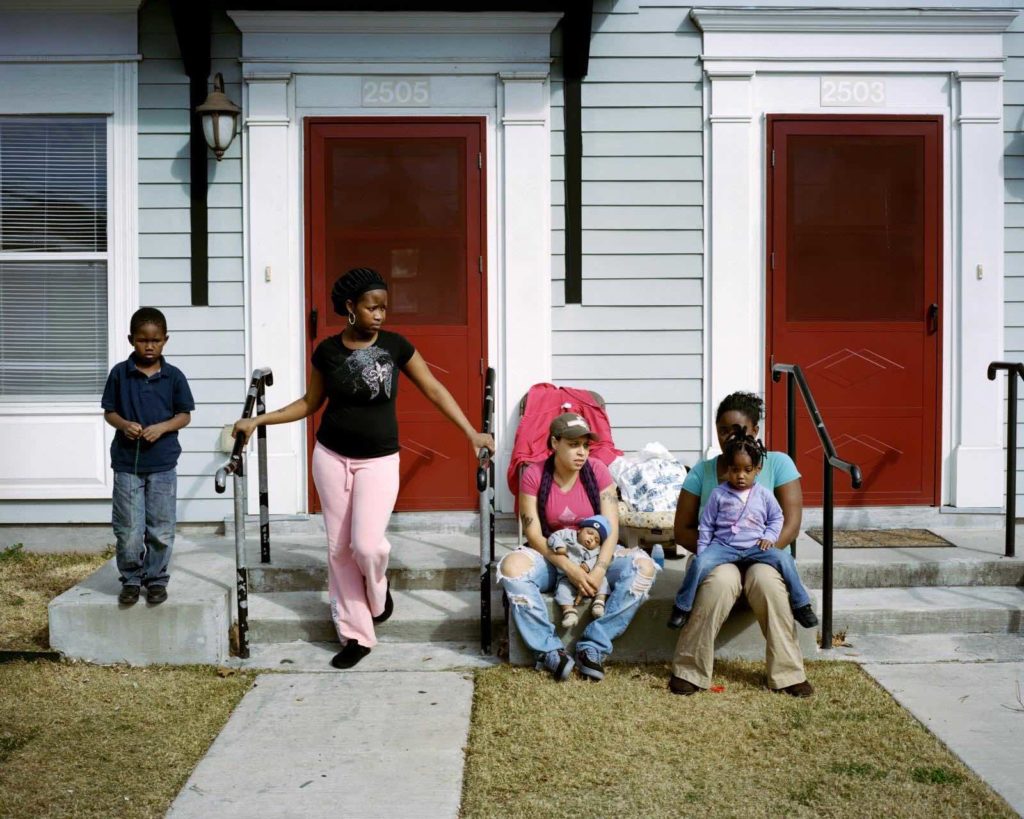


Incarnation at Couvent Saint-Césaire
With new image creation technologies such as photogrammetry and LiDAR scanning, the photographic image becomes volume, space, experience. The Incarnation exhibition brings to view these new image-worlds, by presenting the work of a generation of artists who, with photographic means, fabricate virtual ecologies, avatars-portraits, hybrid bodies, embodied stories. A journey of experiences in the form of immersive and fun installations.

Stéphan Gladieu at Jardin d’Eté
North Korea is far from being perfect, but here is a country that has one undeniable quality that almost everyone will agree on: it is very photogenic. The proof, once again, with the exhibition by Stéphan Gladieu: “North Korea has always been an enigma to me. Why has it never wobbled while other authoritarian regimes collapsed in the upheavals brought about by the fall of the Berlin Wall, modernity and social media? It has outlasted the communist bloc that guaranteed its political and economic stability; withstood international embargos aiming to strangle it; overcame successive economic, climate or food crises; and never experienced a massive uprising despite constant surveillance and repression. North Korean officials were baffled by my proposal to do individual portraits. My “revolutionary” approach ran against the grain of their collectivist culture. Why did they agree? A desire for openness, no doubt, but also, I think, because the idea of frontal poses, and rigorous framing, was familiar and understandable to them. Deliberately flirting with the conventions of the propaganda image, this device made me static, predictable and controllable.”




Laura Owens at the Fondation Vincent Van Gogh
Because photography isn’t everything in life, end your day at the Vincent Van Gogh Foundation, which hosts the works of American artist Laura Owens throughout the summer.

Let’s have dinner in Arles
Chardon
If you want to dine in Arles, you will not escape a visit to Chardon, the restaurant of the Paris Popup team and the Marseille Mercerie, alias Harry Cummins, Laura Vidal and Julia Mitton. Reservation required given the success of the place.

La Chassagnette
But if you are in a Camargue mood, head to Armand Arnal’s La Chassagnette, its terrace surrounded by fig trees, its organic vegetable garden and its cuisine with explosive flavors, for what will perhaps be your best dinner of the year. Count 105 € for the Fauna and Flora menu. Highly recommended.

Sunday in Arles
Raymond Cauchetier at Abbaye de Montmajour
From Raymond Cauchetier, we know the photographs of the icons of the Nouvelle Vague: Jean Seberg and Jean-Paul Belmondo descending the Champs-Élysées in Breathless, Jeanne Moreau with a smile that flies between Jules and Jim, the portraits of Anouk Aimée in Lola’s clothes…

Only specialists know that this picture, which over time became the emblem of the film and even of the New Wave, is not a set photo. The cameraman, hiding in a post office cart, had just shot the scene where Jean Seberg and Jean-Paul Belmondo meet in the middle of a crowd at the top of the Champs-Élysées. But the crowd of curious onlookers got so big that I preferred taking the actors down the avenue to a still-empty spot to redo the scene and summarize it in a single image. My photo-novel experience, which allowed me to make a living between two films, served me well. Little did I know that this improvised shot would have such an exceptional destiny.
The set photographer of Godard, Truffaut, Demy, Rozier and Chabrol, unfortunately passed away this year. He has embodied the insolence of the Nouvelle Vague by reinventing the contours of set photography: he entered the field, reenacted scenes, documented what precedes or accompanies the shooting: Godard pushing the cart where the cameraman is curled up for a subterfuge tracking shot, with the technical team of Adieu Philippine crammed into a 2CV …

Friday, September 11, 1959, 1 p.m., studio, rue Campagne Première, Paris.
This image sums up the incredible blow Godard dealt to the filming methods of classic cinema. With his right hand he pushes the wheelchair in which the cameraman is curled up. Thus he alone manually controls the tracking shot planned for this scene. At the same time, with his other hand he holds a piece of paper on which the improvised dialogue was scribbled down a few minutes earlier on a café table and reads it out loud to Jean Seberg and Jean-Paul Belmondo. The actors rehearsed the text, making the motions that Godard showed them, according to the camera’s movement. The most amazing thing is that everything worked out perfectly.

For those who don’t know it, a dolly is wheeled cart carrying the camera and the camera operator and pushed along a kind of small railway track. This device allows the actors to be filmed smoothly as they move about. But the equipment is heavy, cumbersome and very expensive to rent. New Wave directors had to find cheaper ways to achieve the same results. Roger Mathelin, the head cameraman on Adieu Philippine, discovered that the suspension of the Citroën 2CV was ideal to replace the traditional dolly, as long as it was heavily weighted down and the tires were deflated. That’s why he had the whole technical crew get into the car on a bumpy road in the small Corsican town of Calvi. When you don’t have lots of money, you need ideas.

Wednesday, April 26, 1961, 9 a.m., Passerelle de Valmy, Charenton-le-Pont.
In those days, I was still using the Rolleiflex that had faithfully served me during the Indochina war. To film this scene, which became famous, I had to turn the camera crank after each shot because there was no motor. So I could only take one shot of the finish of each of the four races successively filmed by François Truffaut. Like sports photographers, I had to choose the 500th of a second that seemed best to me each time. The last shot was the best.

Godard, particularly happy with the last shot, congratulates Anna Karina on her acting.
Luma Arles
So a few days before the Rencontres kick off, on June 26 to be precise, the Luma Foundation opened its doors. Obviously spectacular. Because Swiss billionaire Maja Hoffmann did not go with the back of a spoon. The buildings rehabilitated by the German architect Annabelle Selldorf, the gardens and the park by Bas Smets, the tower of Frank Gehry …
Masculinities and Clarisse Hahn at the Ateliers de Mécanique Générale
Produced by the Barbican Center in London, the Masculinities exhibition is one of the events of this edition. It studies how masculinity has been encoded, interpreted and socially constructed from the 1960s to the present day, through film and photography. On the bill are more than 50 international artists, photographers and directors, including Laurie Anderson, Sunil Gupta, Rotimi Fani-Kayode, Isaac Julien and Catherine Opie.



For her series “The Princes of the Street”, Clarisse Hahn continues her long-term work on the “Boyzones” with an immersion in the Parisian Barbès district, its market, its trafficking, its kebabs, its cigarette vendors…


If you have the time and in order to recover from this overdose of images, spend the rest of the day at the beach, in La Playa to be exact.
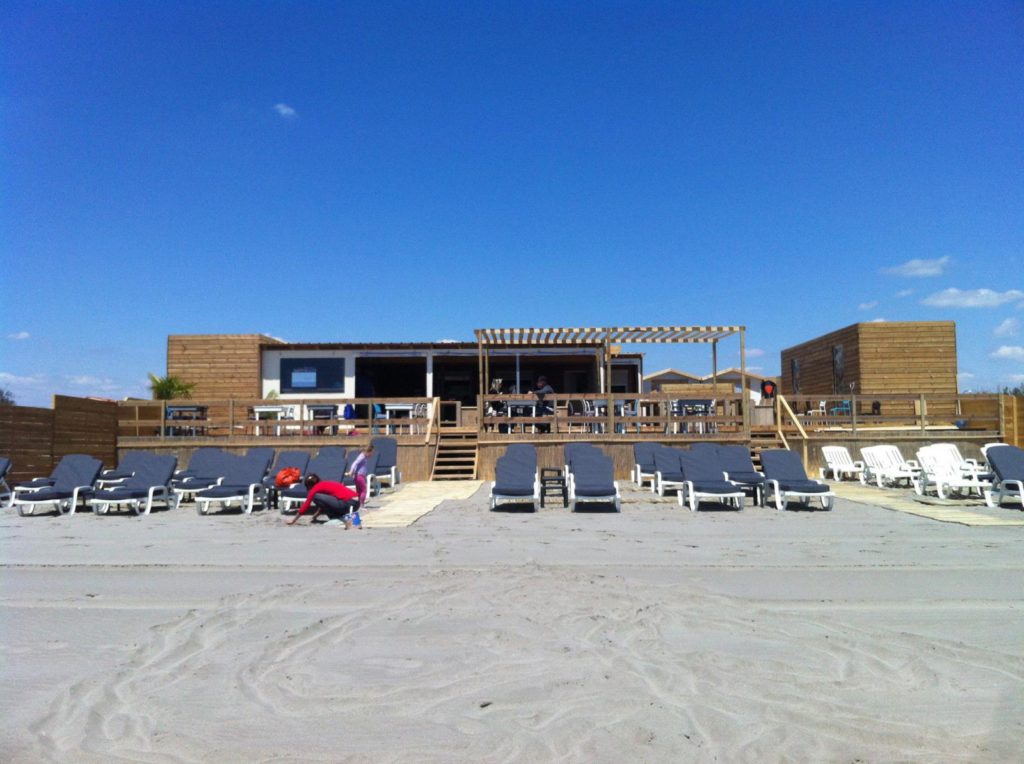
Click here with your finger (or with your mouse if you are on a computer equipped with the tool in question) to access the page devoted to Mr. Bernard’s addresses in Arles.











